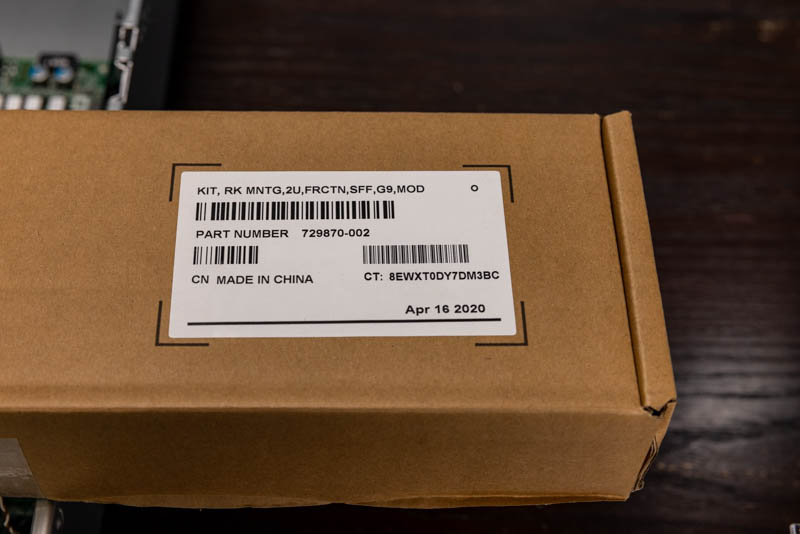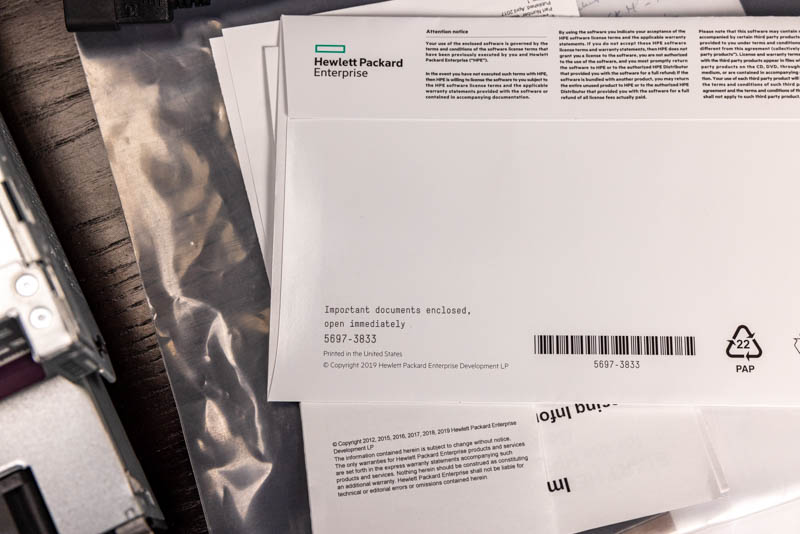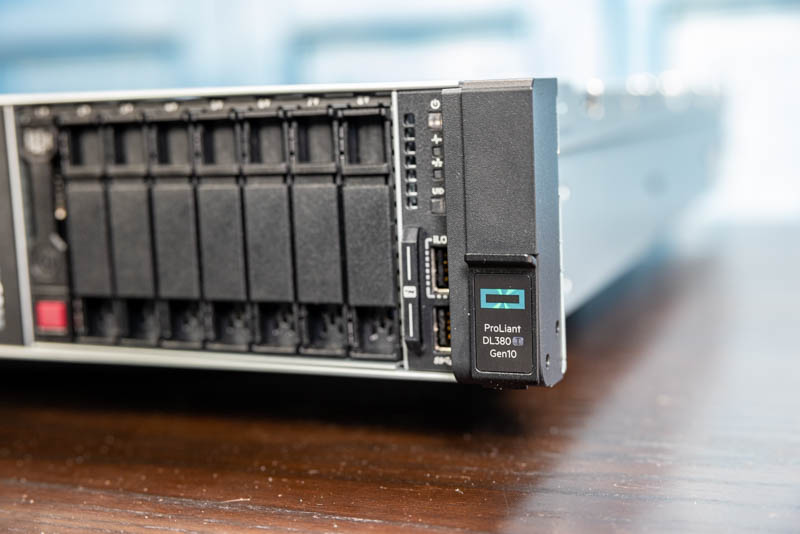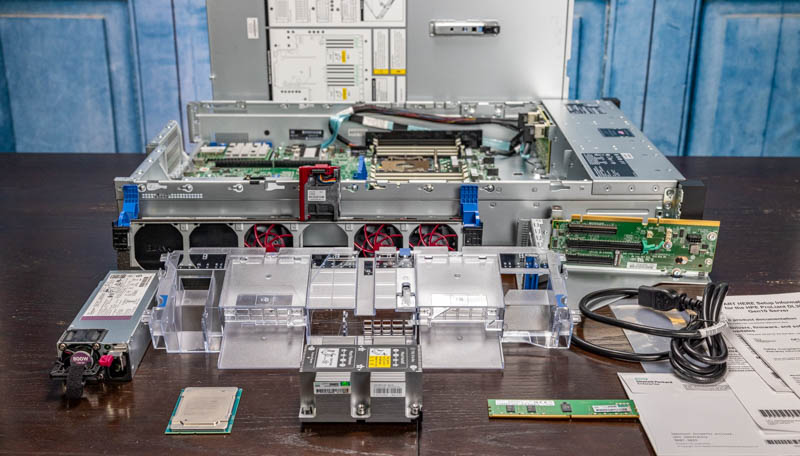HPE ProLiant DL380T Gen10 Trusted Supply Chain Offering Miscellaneous
We also wanted to take a look at parts that were not installed in our server. The chassis rails are marked Made in China as was the power supply cable.

We did, however, find a key component that was from the United States. The iLO License packs for HPE are “Printed in the United States.” This may not seem like a big deal, but many of the security features require higher-end iLO licenses.

Overall, we just wanted to show some of the major components in the system and take a tally of where they are made. We likely missed a few, but this gives some sense of the system from a component level. Our readers should also notice why we are not going through a standard review. Although we have CPUs, memory, drives, and even HPE SmartArray controllers in the lab, we do not have spare heatsinks, fans, and risers for the system. At some point, we had to make a call and thought it would show HPE in an unfavorable light for us to use a potentially incomplete or incorrect mix of components.
We will also note that this is how HPE sent us the server configured, so our teardown was predicated on that. HPE can swap out components and has an enormous number of configurable options. As a result, your configuration may vary from what we have, and likely will.
Final Words
After our first article, we had some readers suggest that we were incorrect and the server was entirely built and components sourced from US manufacturing sites for the HPE Trusted Supply Chain offering. Through our teardown, the only items we saw clearly marked made in the US was the system label and the iLO envelope. That somewhat makes sense given that the country of origin United States requires a “substantial transformation.” It is certainly fair to say that going from server components to a complete server is a substantial transformation.

After tearing apart the HPE ProLiant DL380T Gen10, it makes the program seem more clear. Instead of a component sourcing discussion, realistically, the substantial transformation happens at a US facility. HPE can validate that the components and system meet its specs and requirements, set the configuration locks, pack the system, and then manage logistics using screened personnel all the way to customer docks or racks. This is the next level of security and makes sense for a low-double-digit percentage price increase. Of course, with options like high-touch delivery costing more.

Through this teardown, we now have a good sense of how HPE can scale this model to service customers in other countries and economic zones. HPE can set up an assembly and printing facility in other jurisdictions and then use iLO security features alongside some of the testing and physical handling to provide some level of tamper resilience in its supply chain. Given the market demand for this type of offering, we think that we are looking at a first-generation of this offering. This feels like the type of offering that customers will demand additional features around in the future.




I don’t care about the metal and plastic. I do care about the drives, memory, processors, chips, PCBs, and other electronic parts like wires and fans. You went too far in the teardown.
Well this is very nice and all but let us have a conversation about BGP highjacking if we are all worried about what the funny chips that the evil forners put in our servers do.
@RunsackAL, while some have nationalist concerns about the origin of their products down to the smallest details, I would agree that an article addressing “Trusted Supply Chain” could probably ignore case “metal and plastic” parts (including PCB board).
So server comes from trusted supply chain and pcb is made in China? Is that a joke or two? Or has HPE really put the pcb under microscope and verified everything to the latest detail? Can’t believe this at all…
Patrick, in negativity against HPE put into previous comment I’ve forgotten to thank you for this wonderful article. That’s something I’ve been diging into recent months and it’s indeed highly complex task to get some meaning full information about the components country of origin from the hardware vendors. Servers are in the first battle line so I would expect way better job performed by HPE here, but the hell I got with notebooks is unbelievable too. Vendors freely claim that their notebooks are assembled in U.S.A. while it’s clear that this is ODM work done somewhere in China or in the best case in Taiwan etc. etc.
It’s really hard to source some components which has not been on mainland China…
I’d really appreciate if you would just enhance your future articles by single line or two mentioning also component/system country of origin. Would help a lot here. Thanks for all your great work!
Wowza. Thank you for doing this. This is a great level of detail.
US-made is the opposite of trust.
Looks like assembled in the US with some papers printed in the US. Once assembled, all transport is domestic which makes supply chain interruptions harder. Over time I wonder if they will start utilizing more North American supply sources for more of the platforms.
See the FTC website: https://www.ftc.gov/tips-advice/business-center/guidance/complying-made-usa-standard#Assembled%20in%20U.S.A.
Assembled in the USA.
I’m not going to pick on anywhere in this comment, but I wouldn’t want to pay extra for this configuration; I’d prefer to source my own motherboard.
Trusted Supply China